The immune response after hypoxia-ischemia in a mouse model of preterm brain injury
- PMID: 25187205
- PMCID: PMC4172879
- DOI: 10.1186/s12974-014-0153-z
The immune response after hypoxia-ischemia in a mouse model of preterm brain injury
Abstract
Background: Preterm brain injury consists primarily of periventricular leukomalacia accompanied by elements of gray-matter injury, and these injuries are associated with cerebral palsy and cognitive impairments. Inflammation is believed to be an important contributing factor to these injuries. The aim of this study was to examine the immune response in a postnatal day (PND) 5 mouse model of preterm brain injury induced by hypoxia-ischemia (HI) that is characterized by focal white and gray-matter injury.
Methods: C57Bl/6 mice at PND 5 were subjected to unilateral HI induced by left carotid artery ligation and subsequent exposure to 10% O2 for 50 minutes, 70 minutes, or 80 minutes. At seven days post-HI, the white/gray-matter injury was examined. The immune responses in the brain after HI were examined at different time points after HI using RT-PCR and immunohistochemical staining.
Results: HI for 70 minutes in PND 5 mice induced local white-matter injury with focal cortical injury and hippocampal atrophy, features that are similar to those seen in preterm brain injury in human infants. HI for 50 minutes resulted in a small percentage of animals being injured, and HI for 80 minutes produced extensive infarction in multiple brain areas. Various immune responses, including changes in transcription factors and cytokines that are associated with a T-helper (Th)1/Th17-type response, an increased number of CD4+ T-cells, and elevated levels of triggering receptor expressed on myeloid cells 2 (TREM-2) and its adaptor protein DNAX activation protein of 12 kDa (DAP12) were observed using the HI 70 minute preterm brain injury model.
Conclusions: We have established a reproducible model of HI in PND 5 mice that produces consistent local white/gray-matter brain damage that is relevant to preterm brain injury in human infants. This model provides a useful tool for studying preterm brain injury. Both innate and adaptive immune responses are observed after HI, and these show a strong pro-inflammatory Th1/Th17-type bias. Such findings provide a critical foundation for future studies on the mechanism of preterm brain injury and suggest that blocking the Th1/Th17-type immune response might provide neuroprotection after preterm brain injury.
Figures
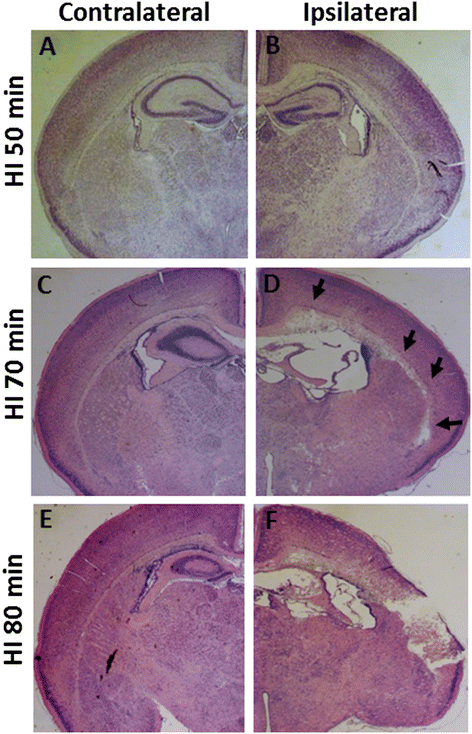

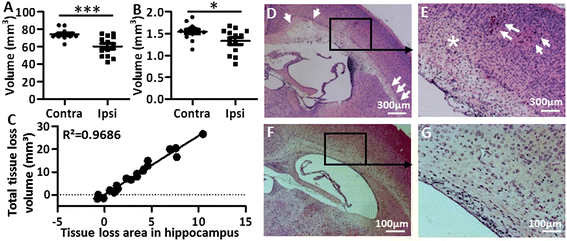
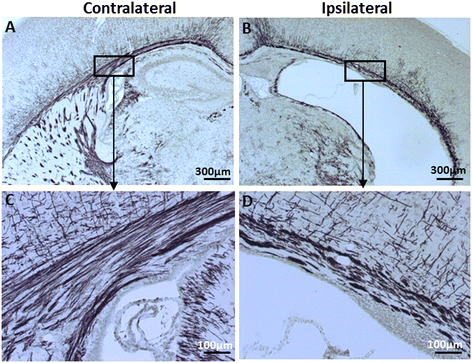


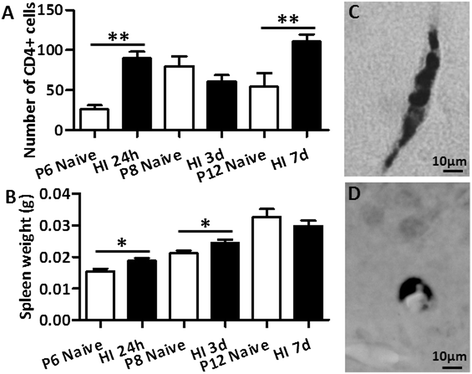
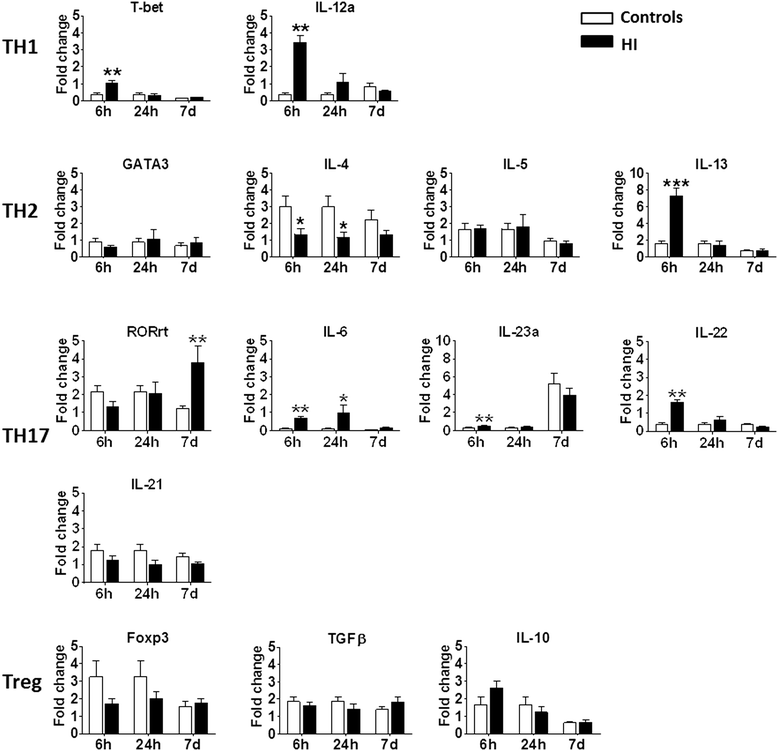
References
-
- Inder TE, Huppi PS, Warfield S, Kikinis R, Zientara GP, Barnes PD, Jolesz F, Volpe JJ. Periventricular white matter injury in the premature infant is followed by reduced cerebral cortical gray matter volume at term. Ann Neurol. 1999;46:755–760. doi: 10.1002/1531-8249(199911)46:5<755::AID-ANA11>3.0.CO;2-0. - DOI - PubMed
Publication types
MeSH terms
Grants and funding
LinkOut - more resources
Full Text Sources
Other Literature Sources
Research Materials

